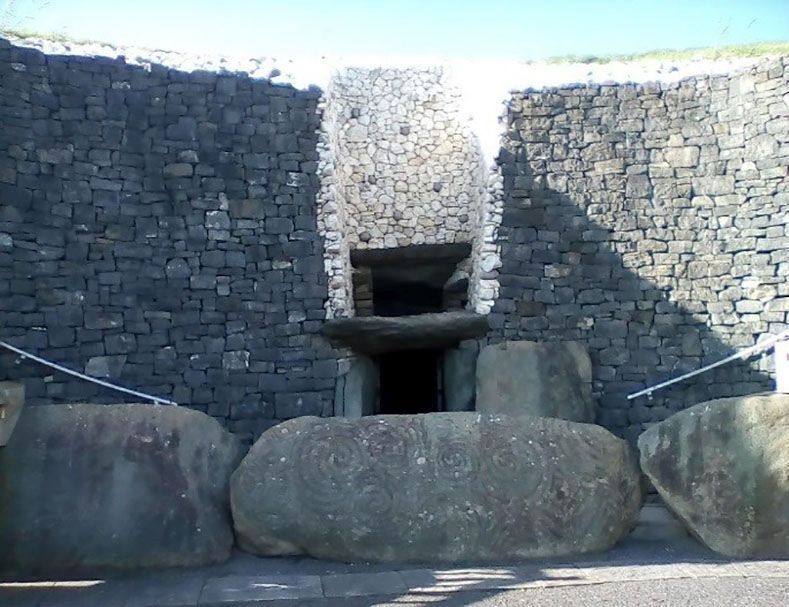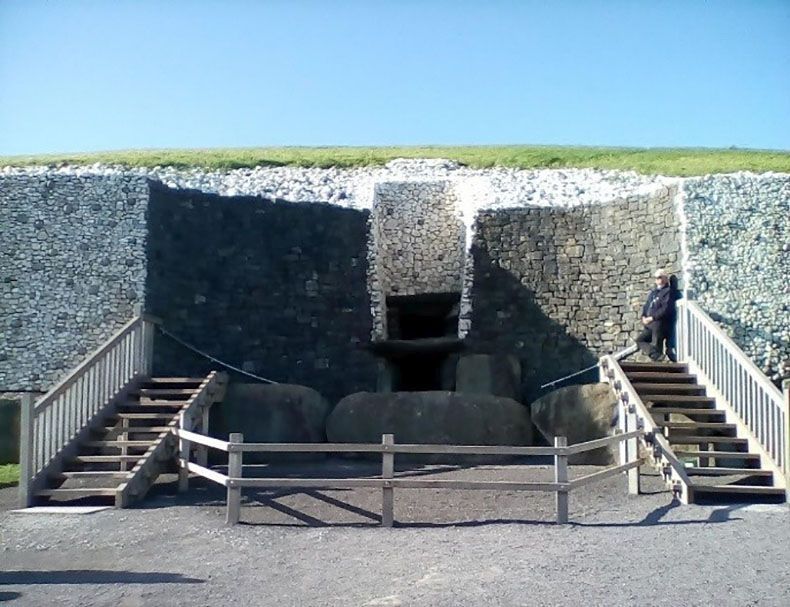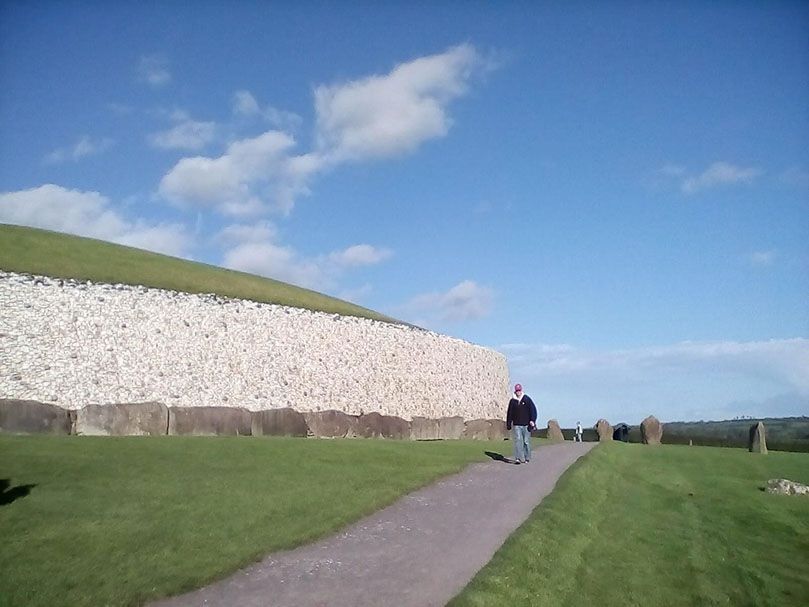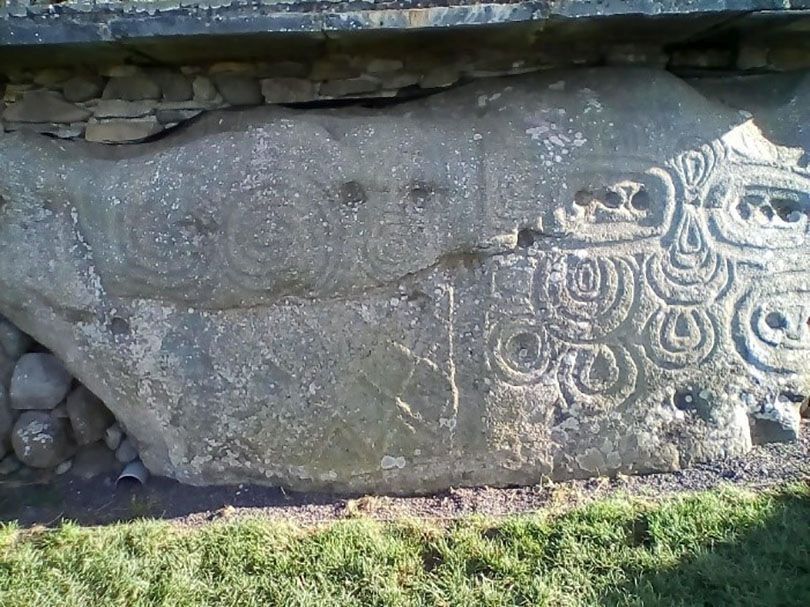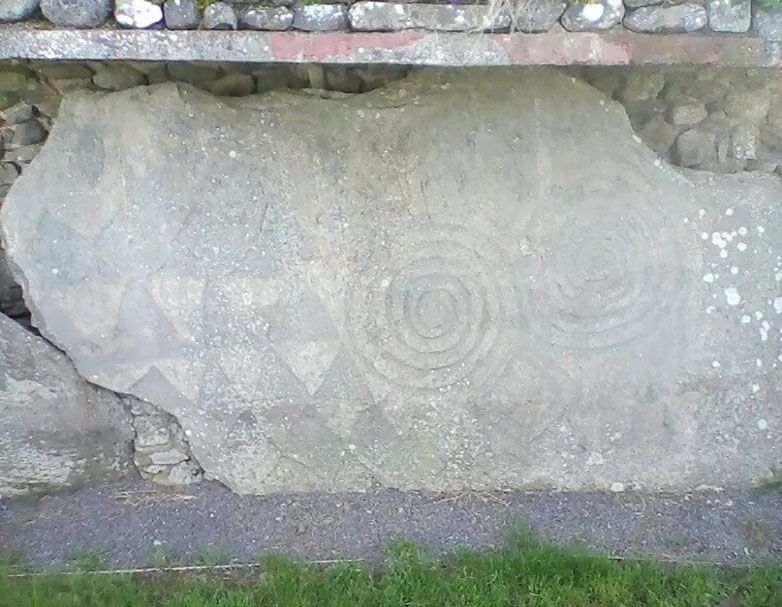Step Back 5000 Years in Time Part 2
This week in the CIEE Blog we’re catching up on the second half of Erik Finley’s trip to Newgrange…
Newgrange Tomb
Our second stop was the Newgrange tomb. Newgrange is different in the respect that it doesn’t appear to have been inhabited since the time of its construction around 3000 B.C. However, Newgrange was discovered in 1699, compared to Knowth’s discovery in 1962, and was not protected by the federal government until 1882.
This means that inside of the tomb there is some interesting 18th and 19th century graffiti. Unfortunately this also means that the stone basin in the heart of the central chamber was shattered. Luckily, that is the only human interference inside the tomb. The boulders used as walls and the rock plates holding up the ceiling remain exactly the way they were placed by the Neolithics 5000 years ago.
The central chamber and tunnel leading to it were absolutely awe-inspiring, as visitors were allowed to walk all the way into the tomb, seeing ancient architecture firsthand. Unfortunately, photography was prohibited inside the tomb, so I was unable to get any pictures within the tomb. There are plenty of pictures taken by professional photographers online, and I would encourage anyone interested in the tomb to just search “Newgrange tomb” on Google.
The most astonishing part of Newgrange is that every December, during the winter solstice, the sun is lined up perfectly with the entrance to the tomb, creating a single beam of light penetrating the chamber and leading directly to the stone basin of ashes.
As breathtaking as the inside of the tomb is, the outside is pretty amazing too. The outer decoration of the mound was restored by archeologist, Michael J. O'Kelly in the 1960s and 1970s. Kelly believed that the quartz rock found around the entrance of the tomb was of great importance in the process of moving on to the afterworld.
The quartz found at the tomb was thought to have been carried over fifty kilometers to the construction site. Below are some pictures of the Entrance to the tomb and the quartz layer surrounding it. Lastly, I just want to share a couple more images of decorative stones surrounding the base of Newgrange.
It seems amazing to me that a civilization of people that are often, in the modern light, looked upon as savage and unintelligent could achieve such a feat. Five millennia after its creation, Newgrange continues to guide that beam of light to the heart of its central tomb, shining on that pedestal every single year, without fail.
Related Posts

EAT, DRINK, EXPLORE: DUBLIN
BEST FOOD TO EAT IN DUBLIN A Full Irish is no joke. When you’ve got a long day ahead of you, start the day with a Full Irish and you’ll... keep reading

Ireland Traditions and Culture You Should Know
Known for its lush landscapes and rich history, The Emerald Isle offers a unique blend of Irish traditions in Ireland that captivate visitors and locals alike. From its ancient Gaelic... keep reading

What Does Craic Mean? Your Guide to Irish Slang
For those not from Ireland , the frequent use of “craic” by the Irish can be a little confusing. We get it. The concept can be a mix of a... keep reading
